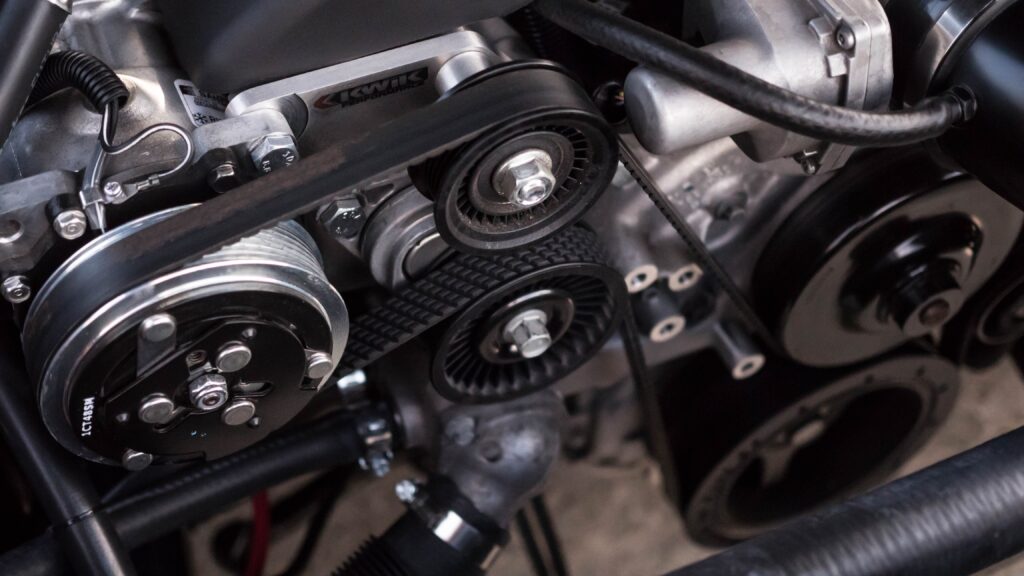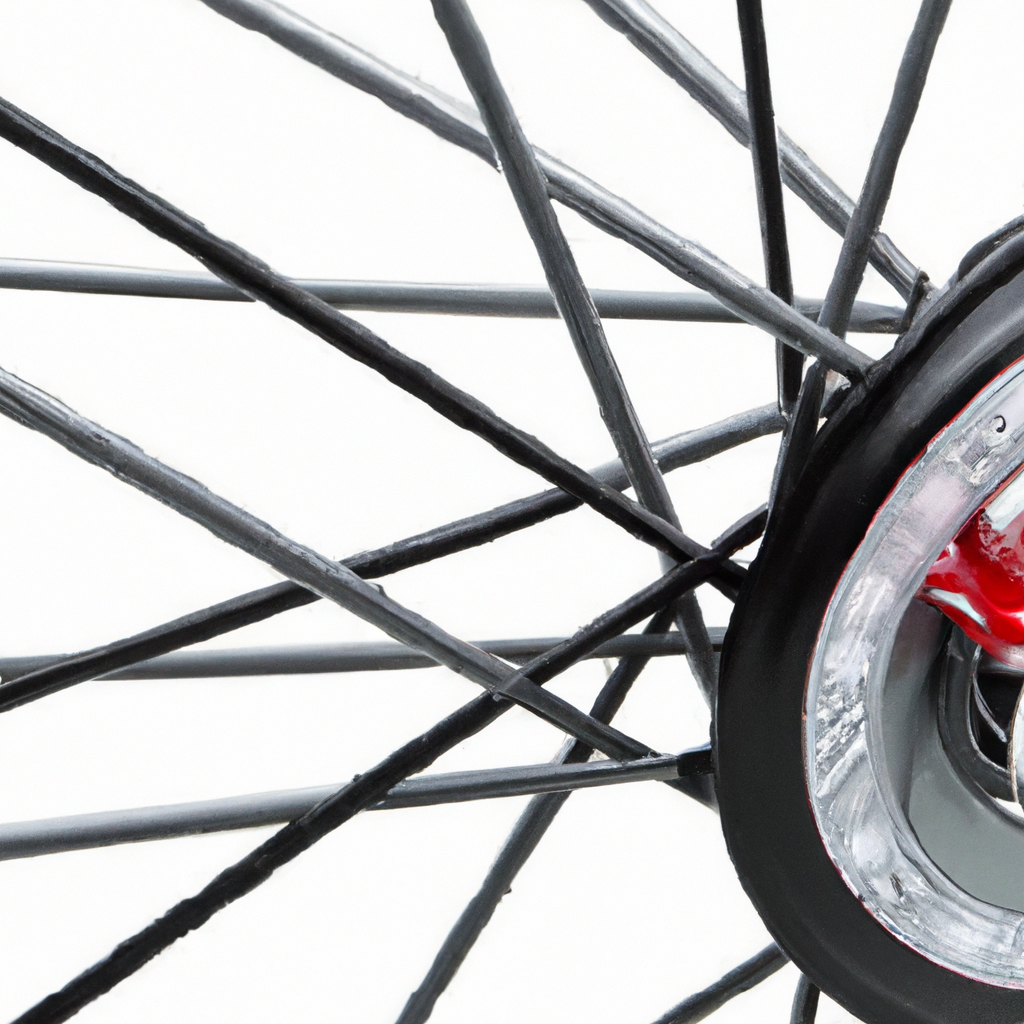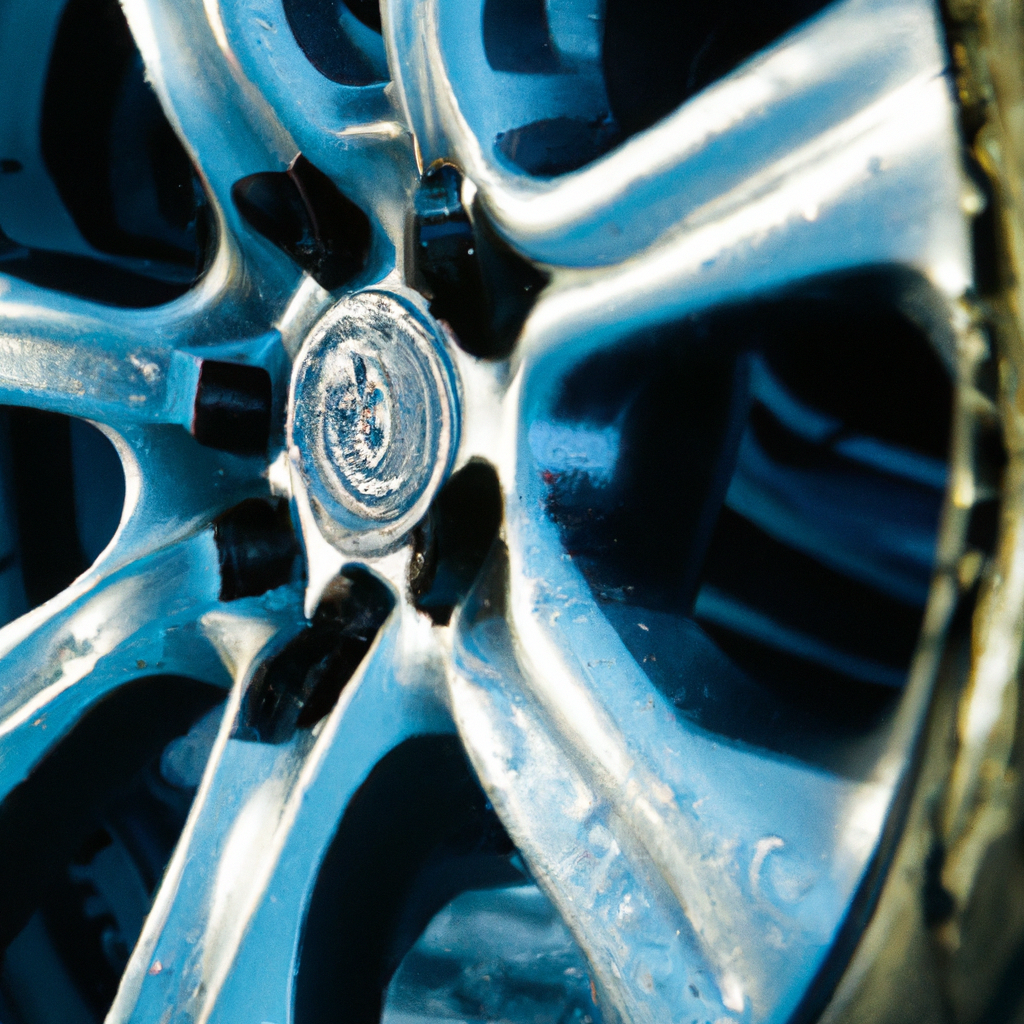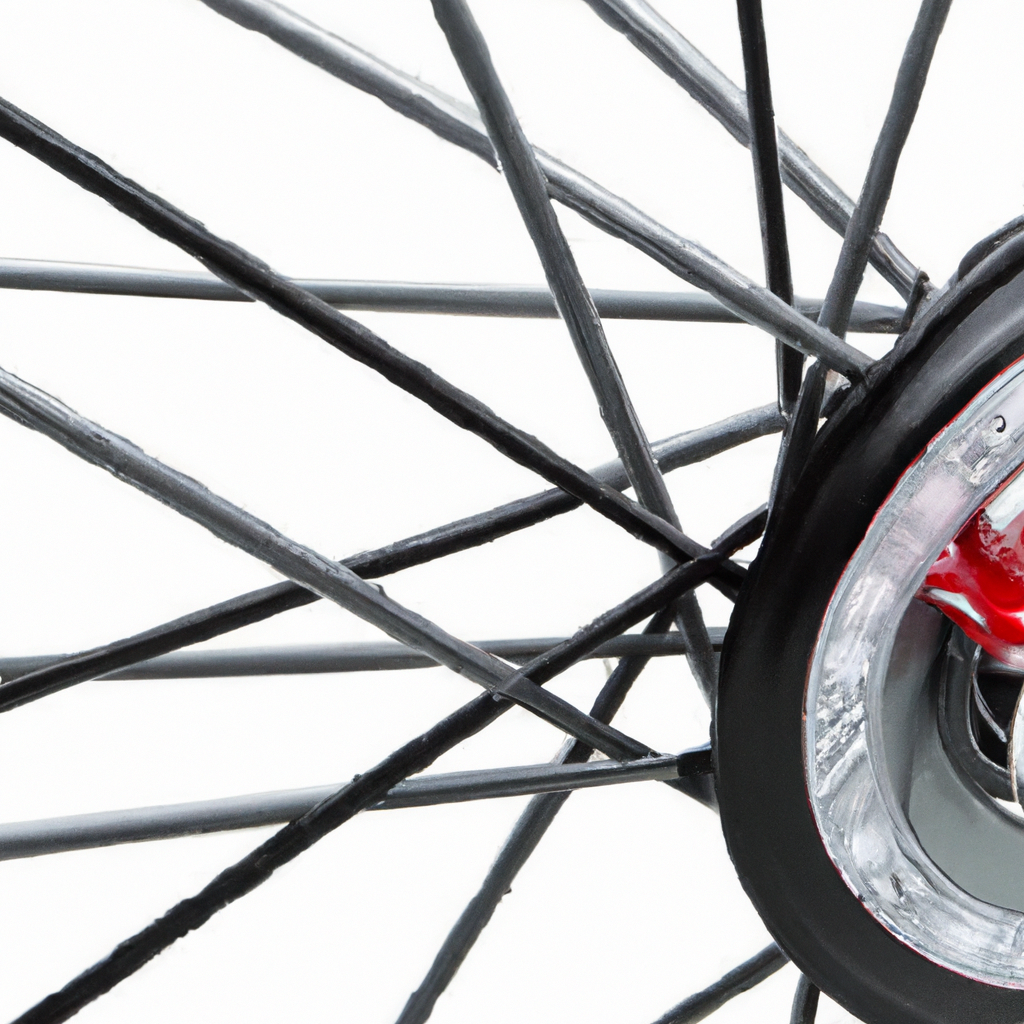If you find yourself facing the daunting task of cleaning wheels with intricate spoke patterns, fear not! We understand that maintaining your beloved vehicle’s appearance is of utmost importance, and we are here to guide you through this seemingly intricate process. With a few simple steps and the right tools, you’ll have those wheels gleaming like new in no time. So let’s roll up our sleeves, put on a friendly smile, and get ready to tackle this wheel-cleaning challenge together!

Preparing for Cleaning
Cleaning your wheels with intricate spoke patterns requires some preparation to ensure the process goes smoothly. Here are the essential steps to take before you begin.
Gather necessary materials
To clean your wheels, you’ll need a few materials at hand. Make sure you have a wheel cleaner that is suitable for your specific wheel material, such as alloy, chrome, painted, or polished wheels. Additionally, you’ll need wheel brushes or detailing tools, small brushes or cotton swabs for reaching intricate spoke patterns, and a suitable cleaning solution for your particular wheel material. Having all these materials ready will save you time during the cleaning process.
Choose a suitable location
Selecting the right location for cleaning your wheels is crucial. Ideally, you should choose an open and well-ventilated area, such as your driveway or a spacious garage. It’s important to have sufficient space to move around the wheels and work comfortably without any obstructions. Additionally, be mindful of the surface you’re cleaning on. If you’re working in a garage, you might want to lay down some protective sheets or use a designated cleaning mat to prevent any oil or dirt from staining the floor.
Prepare the wheels
Before you dive into the cleaning process, it’s essential to prepare your wheels properly. Start by removing any loose dirt and debris from the surface using a soft brush or a gentle stream of water. By doing this, you’ll minimize any potential scratches or damage that could occur during the cleaning process. Once you’ve removed the loose dirt, you’re ready to move on to the next step: cleaning the surface of the wheels.
Cleaning the Surface
Now that you’ve prepared your wheels, it’s time to focus on cleaning the surface. Follow these steps to achieve a spotless finish.
Remove loose dirt and debris
Before applying any cleaning products, it’s important to remove any remaining loose dirt and debris from the surface. Use a soft brush or a gentle stream of water to clean the entire wheel thoroughly. Pay special attention to the hard-to-reach areas, including between the spokes and around the wheel nuts. This step will ensure that the cleaning solution can penetrate effectively and provide optimal results.
Apply a wheel cleaner
Once you’ve removed the loose dirt and debris, it’s time to apply a suitable wheel cleaner. Choose a product that is specifically designed for your wheel material. Spray the wheel cleaner evenly across the surface of the wheel, making sure to cover all areas, including the intricate spoke patterns. Allow the cleaner to sit for the recommended time specified on the product label. This will allow the cleaner to break down any stubborn dirt or grime.
Utilize wheel brushes or detailing tools
To achieve a thorough clean, it’s essential to use wheel brushes or detailing tools. These specialized tools are designed to reach even the tightest spots of intricate spoke patterns. Choose brushes with soft bristles that won’t scratch the surface of your wheels. Dip the brush in the cleaning solution and gently scrub each spoke, working your way around the wheel. Pay attention to any areas with accumulated dirt or brake dust. Rinse the brush regularly to avoid cross-contamination between spokes. Once you’ve finished scrubbing, rinse the wheel thoroughly with water to remove any remaining cleaning solution.
Reaching Intricate Spoke Patterns
The intricate spoke patterns on your wheels might require some extra attention to ensure that every nook and cranny is clean. Here are some tips to help you reach those hard-to-clean areas.
Use small brushes or cotton swabs
To clean intricate spoke patterns effectively, using small brushes or cotton swabs can be incredibly helpful. This allows you to apply more pressure and maneuver into tight spaces. Dip the small brush or cotton swab into the cleaning solution and gently scrub each spoke. Take your time and be meticulous, ensuring that you clean every part of the pattern.
Avoid excessive water or cleaning solution
When cleaning intricate spoke patterns, it’s important to be mindful of the amount of water and cleaning solution you are using. Excessive amounts of either can seep into places that are difficult to dry, potentially causing corrosion or damage. Use a moderate amount of cleaning solution and control the amount of water you use. This will help ensure that you can dry the wheels thoroughly before completing the cleaning process.
Be patient and meticulous
Cleaning intricate spoke patterns can be a time-consuming task, but it’s essential to be patient and thorough. Take your time to inspect each spoke carefully, making sure to remove any traces of dirt, brake dust, or grime. Being meticulous in your cleaning process will result in wheels that look pristine and well-maintained once the cleaning is complete.
Cleaning Solution for Different Wheel Materials
Different wheel materials require different cleaning solutions to avoid any damage or discoloration. Here are some guidelines to help you choose the right cleaning solution for your specific wheel material.
Alloy or chrome wheels
For alloy or chrome wheels, it’s best to use a mild wheel cleaner that is specifically formulated for these materials. Harsh or abrasive cleaners can damage the surface and lead to corrosion or discoloration. Make sure to read the product labels carefully and choose a cleaner that is safe for use on alloy or chrome wheels. Additionally, avoid using any acidic solutions or abrasive brushes that could scratch the delicate surface.
Painted wheels
If you have painted wheels, using a gentle wheel cleaner designed for painted surfaces is recommended. Painted wheels are susceptible to chipping or peeling if harsh chemicals or abrasive brushes are used. Look for a pH-neutral cleaner that is safe for painted surfaces. This will ensure that your wheels are effectively cleaned without causing any damage to the paintwork.
Polished wheels
Polished wheels require special care to maintain their shine and avoid any scratches or dullness. When cleaning polished wheels, choose a non-abrasive cleaner specifically formulated for polished surfaces. Acidic cleaners or abrasive brushes can strip away the polish and leave the wheels looking dull. Opt for a pH-neutral, non-abrasive wheel cleaner, and use soft brushes or microfiber cloths to gently clean the surface.

Cleaning and Drying Other Wheel Components
While cleaning the surface of your wheels is crucial, don’t forget to give attention to the other components as well. Here are a few areas that require cleaning and drying.
Cleaning brake calipers and rotors
As you clean your wheels, take the opportunity to clean the brake calipers and rotors as well. These components can accumulate brake dust and dirt, affecting their performance over time. Use a specialized brake cleaner and a soft brush to scrub away any dirt or debris. Be careful around the brake lines and other sensitive components. Rinse thoroughly and dry them properly before continuing with the wheel cleaning process.
Drying the wheels thoroughly
After cleaning your wheels, it is crucial to dry them thoroughly to prevent water spots and potential corrosion. Use a clean microfiber towel or a soft cloth to dry each wheel, ensuring you reach all the intricate spoke patterns and other hard-to-reach areas. Wipe away any excess moisture, paying attention to any corners or crevices where water might pool. Proper drying will help maintain the appearance and longevity of your wheels.
Removing Stubborn Stains or Brake Dust
Sometimes, standard cleaning may not be sufficient to remove stubborn stains or brake dust from your wheels. Here are a few additional steps you can take to tackle these challenges.
Try a specialized cleaner
If you’re dealing with stubborn stains or brake dust, trying a specialized wheel cleaner can be helpful. These cleaners are specially formulated to dissolve tough grime and remove brake dust effectively. Apply the cleaner to the affected areas, following the product instructions, and allow it to sit for the recommended time. Use a brush or detailing tool to agitate the cleaner gently, and rinse with water. Repeat the process if necessary until the stubborn stains or brake dust are completely removed.
Use a fallout remover
If you notice tiny rust spots or iron contaminations on your wheels, using a fallout remover can help eliminate them. These products contain chemicals that react with iron particles, causing them to dissolve and be washed away. Keep in mind that fallout removers are potent and should be used with caution. Apply the fallout remover as directed, ensuring you cover the affected areas. Allow the product to react with the iron particles, changing color as it works. Rinse thoroughly and dry the wheels once the reaction is complete.
Consult a professional for stubborn stains
In some cases, stubborn stains or brake dust may require professional attention. If you’ve tried various cleaning methods without success, it’s advisable to consult a professional detailing service or an automotive specialist. They have access to specialized equipment and products that can effectively remove even the toughest stains, ensuring your wheels regain their original shine.

Protecting and Maintaining Wheels
Once you’ve invested time and effort into cleaning your wheels, it’s important to protect and maintain them to keep them looking their best. Here’s what you can do.
Apply a wheel sealant or wax
To protect your wheels from dirt, brake dust, and other contaminants, applying a wheel sealant or wax is highly recommended. These products create a barrier on the surface of the wheel, making it easier to clean and providing a layer of protection against future damage. Apply the sealant or wax following the product instructions, ensuring all areas are covered. Allow the product to cure properly before exposing the wheels to any water or additional cleaning.
Regularly clean and maintain the wheels
Consistency is key when it comes to maintaining clean and shiny wheels. Make it a habit to clean your wheels regularly, especially after driving in harsh conditions or if you notice a buildup of dirt or brake dust. Regular cleaning will prevent the accumulation of grime and make the cleaning process more manageable in the long run. Additionally, inspect your wheels periodically for any signs of damage or corrosion, and address them promptly to avoid further complications.
Avoid harsh cleaning chemicals
Although cleaning products can be effective in removing dirt and grime, it’s important to avoid the use of harsh cleaning chemicals that might damage your wheels. Acidic or abrasive cleaners can strip away any protective coatings, scratch the surface, or cause discoloration. Stick to gentle, pH-neutral wheel cleaners and use soft brushes or microfiber cloths to prevent any unnecessary damage. Additionally, avoid using abrasive tools like wire brushes or steel wool, as they can cause permanent scratches or marks on the wheel surface.
Safety Precautions
While cleaning your wheels, it’s crucial to prioritize your safety. Here are a few safety precautions to keep in mind.
Wear protective gloves and eyewear
Cleaning products can be harsh and potentially harmful to your skin and eyes. Before you start cleaning your wheels, make sure to wear protective gloves and eyewear to safeguard yourself from any potential splashes or accidents. This precaution will ensure that you can clean your wheels without any harm to your hands or eyes.
Work in a well-ventilated area
Cleaning products can produce fumes that might be harmful if inhaled in large quantities. To prevent any health hazards, it’s crucial to work in a well-ventilated area. If you’re cleaning your wheels in a garage, open the doors or windows to allow fresh air to circulate. A properly ventilated space will help dissipate any fumes and maintain a safe environment for cleaning.
Follow manufacturer’s instructions on cleaning products
Each cleaning product comes with specific instructions and guidelines from the manufacturer. It’s important to read and follow these instructions carefully to ensure effective cleaning and avoid any potential damage. Pay attention to recommended dilution ratios, application methods, and safety precautions mentioned on the product label. By following the manufacturer’s instructions, you can achieve the best results while keeping yourself and your wheels safe.

Additional Tips and Tricks
Here are some additional tips and tricks to enhance your wheel cleaning experience:
Consider using a wheel stand
Using a wheel stand can make the cleaning process more ergonomic and efficient. It allows you to elevate the wheel at a comfortable height, reducing strain on your back and making it easier to clean all areas effectively. Wheel stands are especially useful when removing the wheels for deep cleaning or when performing maintenance tasks.
Remove the wheels for deep cleaning
If you want to give your wheels a thorough deep clean, consider removing them from the vehicle. This provides easier access to all parts of the wheel, including the backs and inner surfaces. However, make sure you have the necessary tools and knowledge to safely remove and reinstall the wheels. If you’re unsure, it’s best to consult a professional to avoid any potential damage or accidents.
Inspect for damage or loose spokes
While cleaning your wheels, take the opportunity to inspect them for any signs of damage or loose spokes. Check for any cracks, bends, or corrosion. Additionally, ensure that all the spokes are secure and tightened properly. If you notice any issues, it’s crucial to address them promptly to prevent further damage and ensure your safety while driving.
Conclusion
Cleaning wheels with intricate spoke patterns may seem like a daunting task, but with the right approach and tools, it can be a rewarding experience. By following the step-by-step process outlined in this article, you can achieve clean and well-maintained wheels that will enhance the overall appearance of your vehicle.
Remember to gather the necessary materials, choose a suitable location, and prepare the wheels before diving into the cleaning process. Take the time to clean the surface thoroughly, reaching all the intricate spoke patterns using small brushes or cotton swabs. Use the appropriate cleaning solution for your specific wheel material to avoid any damage or discoloration.
Don’t overlook the other components of your wheels, such as brake calipers and rotors. And if you encounter stubborn stains or brake dust, don’t hesitate to try specialized cleaners or consult a professional for assistance.
Protecting and maintaining your wheels is crucial for long-term durability and aesthetics. Apply a wheel sealant or wax regularly, keep up with routine cleaning, and avoid using harsh cleaning chemicals.
Lastly, always prioritize safety by wearing protective gloves and eyewear, working in a well-ventilated area, and following the manufacturer’s instructions on cleaning products. Consider using additional tools like wheel stands and periodically inspect your wheels for any damage or loose spokes.
In the end, appreciate the intricacy of your wheels and enjoy the satisfaction of having clean, well-maintained wheels that complement the overall look of your vehicle. Share your cleaning experiences and tips with others, fostering a sense of community and knowledge-sharing among fellow wheel enthusiasts.


